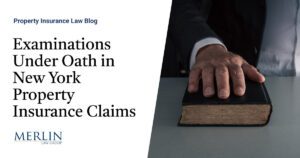Reimagining Retirement: The Case for a Return to Pension Plans

As the retirement crisis looms, experts are exploring innovative solutions to ensure a secure financial future for America’s workforce. One such solution is a return to pension plans, which could provide the stability and affordability employers and employees seek.
Understanding Pension Plans and Their Differences
Pension or defined benefit plans are retirement plans in which employers promise to pay employees a specific benefit upon retirement. The benefit is typically calculated based on the employee’s years of service, salary, and age at retirement.
In contrast, defined contribution plans, like 401(k)s, involve employees contributing a portion of their income to an individual account, which is then invested on their behalf. As a result, the retirement benefit in a defined contribution plan depends on the performance of the investments, making it less predictable and more reliant on market fluctuations.
While defined contribution plans have become the norm in the United States, recent data suggest they may not be enough to provide a secure retirement for many Americans. According to the Bureau of Labor Statistics, 67 percent of private industry workers receive retirement benefits from their employer, and those benefits are defined contribution plans for 52 percent of them. Experts argue that re-embracing pension plans could be a more affordable and stable alternative for employers while providing guaranteed lifetime income for employees.
A study conducted by Fidelity’s 2023 Retirement Savings Assessment found that American savers have just 78 percent of the income they’ll need to cover their expenses during retirement, a decline from 83 percent in 2020. By carefully tailoring the plan’s design to the employer’s desired budget, pension plans can offer the financial security that employees crave without breaking the bank.
The Pension Plan of the Future
To address the need for affordability and stability, experts have proposed a hybrid retirement plan model that combines the best aspects of defined contribution and defined benefit plans. This “plan of the future” would consist of two components: an investment plan, such as a 401(k), and a security plan, which would be a cash-balance pension plan.
Under this model, employees would continue contributing to their 401(k)s, while employers would fund the cash-balance pension plan. As a result, the pension plan would grow at a rate of return that reflects current market conditions, providing a stable source of income during retirement.
Personalization and Education
One of the key aspects of this proposed pension plan model is personalization. In an era where younger workers crave customization in their benefits packages, the hybrid model allows individuals to tailor their retirement plans to their unique needs. By providing the option to roll over funds from the investment plan to the security plan, employees can increase their guaranteed monthly income during retirement.
However, the success of this model relies heavily on effective communication and financial education. According to recent surveys, employees are increasingly worried about outliving their wealth in retirement. Therefore, employers must ensure that their workforce understands the value of pension plans and how they differ from the current strategies in securing a stable financial future. By addressing the specific concerns and needs of each workforce demographic, employers can encourage informed decision-making and drive employee engagement in retirement planning.
Benefits for Employers
Returning to pension plans offers several advantages for employers. First, a more stable and secure retirement plan means employers can attract and retain top talent in a competitive job market. Furthermore, since employers can tailor the cost of the pension plan to their budget, it remains an affordable option that enhances the company’s overall benefits package.
Additionally, employers who prioritize financial education and communication around pension plans can foster a more informed and engaged workforce, leading to increased employee satisfaction and ultimately benefiting the organization.
For more Employee Benefits solutions, contact INSURICA today.
Copyright © 2023 Smarts Publishing
This is not intended to be exhaustive nor should any discussion or opinions be construed as legal advice. Readers should contact legal counsel or an insurance professional for appropriate advice.




